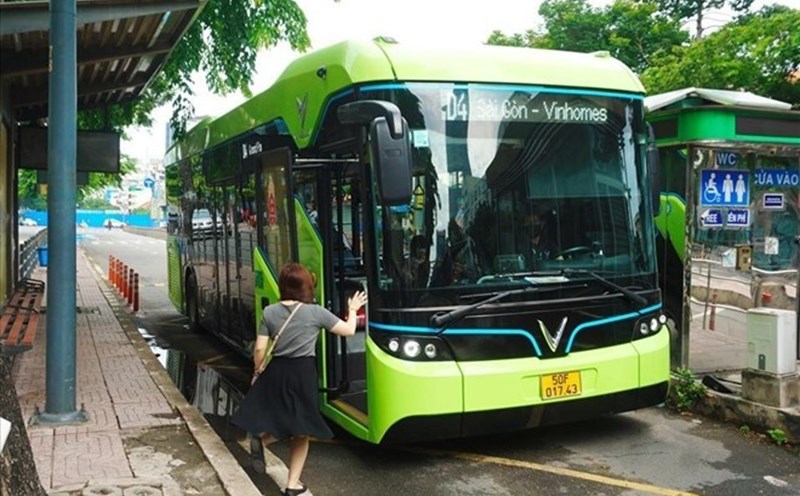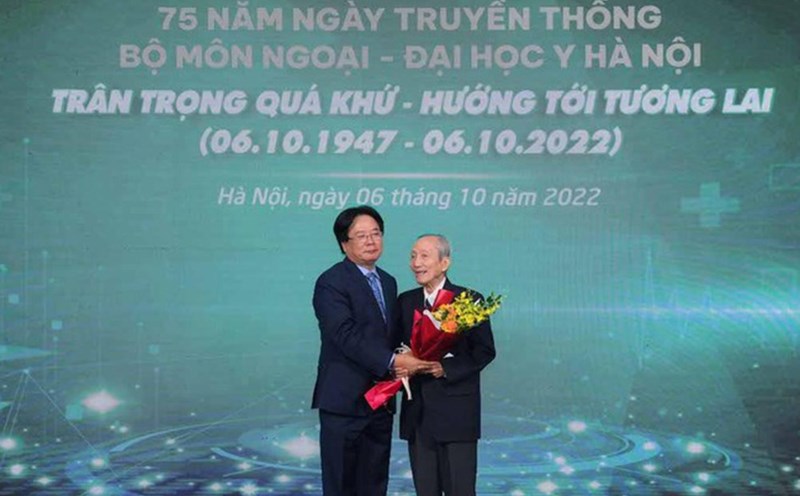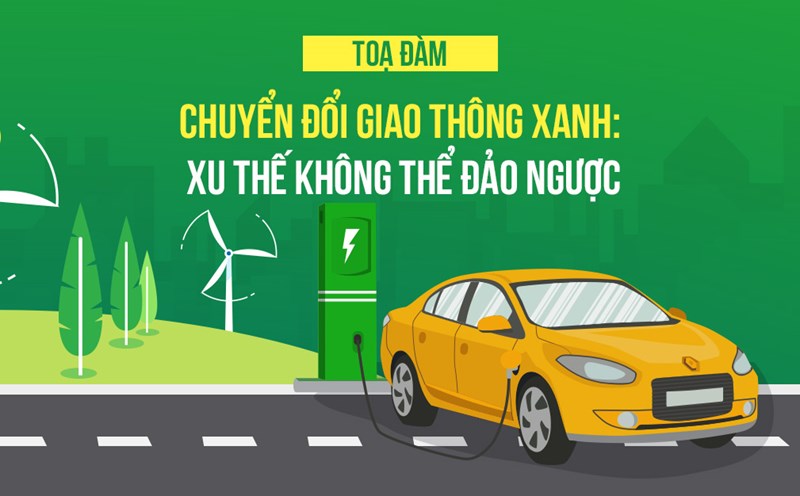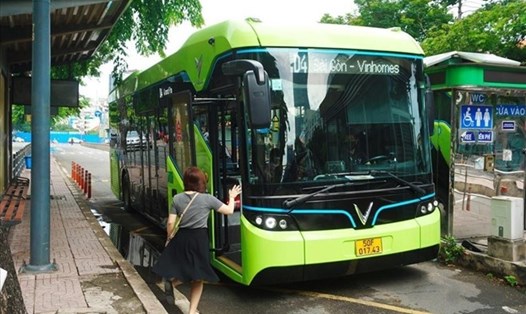The above information was shared by Mr. Ngo Hai Duong - Head of the Road Transport Management Department (HCMC Department of Construction) - at the socio-economic press conference on the afternoon of July 17.
This is one of the main contents in the Vehicle Emissions Control Project that Ho Chi Minh City is implementing in two phases, based on Resolution 98/2023/QH15 of the National Assembly on piloting specific mechanisms and policies for the development of Ho Chi Minh City.
Mr. Ngo Hai Duong said that the Ho Chi Minh City Department of Construction has completed phase 1 of the Project, focusing on the public passenger transport system.
Three main contents have been proposed including: The roadmap for converting buses in the city with the goal of 100% of Ho Chi Minh City's buses using electricity and green energy by 2030; issuing support policies for businesses to convert buses to electricity and green energy and supporting the construction of electric charging stations; investment roadmap for developing electric charging stations according to the bus conversion roadmap.
Currently, the Ho Chi Minh City Department of Construction is coordinating with relevant units to complete the draft Resolution, supplement the impact assessment after Ho Chi Minh City merges with Binh Duong and Ba Ria - Vung Tau, to synchronously deploy throughout the new Ho Chi Minh City. It is expected to report to the Ho Chi Minh City People's Committee and submit to the Ho Chi Minh City People's Council in the fourth quarter of 2025.
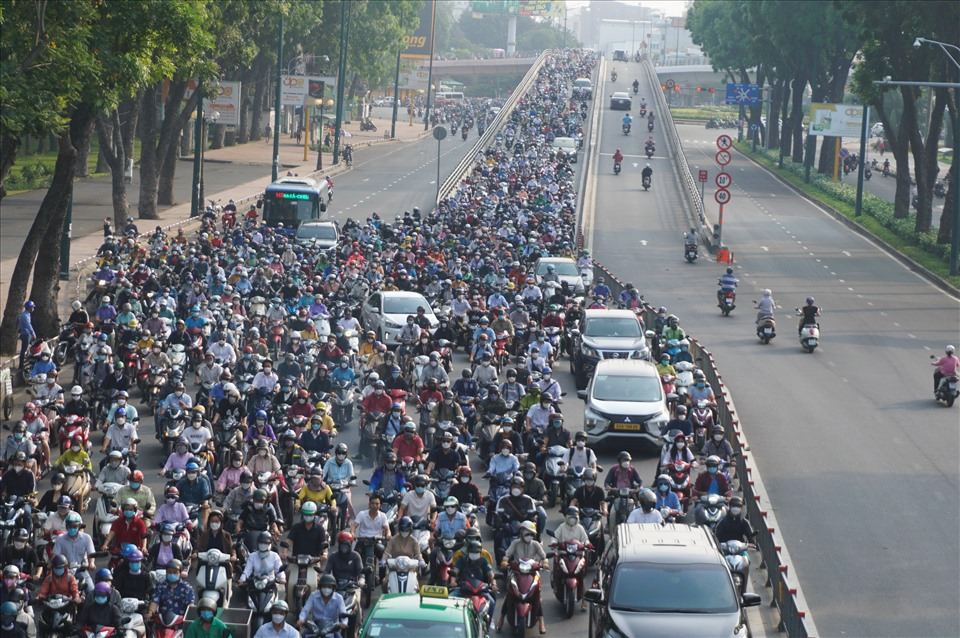
Mr. Ngo Hai Duong said that the consulting unit is currently developing a phase 2 project with a scale of the entire new Ho Chi Minh City.
The project is expected to be completed in the third quarter of 2025, collect opinions from relevant parties and submit to the Ho Chi Minh City People's Council in the fourth quarter of 2025.
In which, the focus is on policy groups including:
Encourage and promote the conversion of private and business vehicles: Policy aimed at individuals, households, cooperatives, businesses... to convert vehicles such as taxis, technology vehicles, contract vehicles, passenger cars, trucks, private cars and vehicles belonging to public administrative units, state-owned and private enterprises... from using fossil fuels to clean energy. Along with that are specific roadmaps, conditions and policies to support the conversion process.
Infrastructure planning and charging stations: Propose a plan to integrate charging stations, battery replacement stations and parking lots for electric vehicles in urban areas, apartments, public works... At the same time, assess the ability to provide energy, technical requirements and infrastructure investment incentives.
Policy on purchasing and exchanging vehicles: Ho Chi Minh City is studying policies on purchasing back or supporting people and businesses to exchange old vehicles using gasoline and oil to electric vehicles and green energy vehicles. At the same time, used vehicles will be treated to minimize environmental pollution.
Emission control by area: Ho Chi Minh City will measure and calculate emissions from road traffic and propose control solutions by 2030, with a vision to 2050.
This includes prioritizing electric vehicles, limiting gasoline-powered vehicles in central areas of Ho Chi Minh City, Can Gio district, Con Dao district...
According to statistics from the Ho Chi Minh City Department of Construction, by the end of June 2025, the Ho Chi Minh City area (before the merger) had more than 9.6 million vehicles, including more than 1 million cars and nearly 8.6 million motorbikes. Compared to the same period in 2024, the number of cars increased by 9% and motorbikes increased by 2%.
After merging Ho Chi Minh City with Binh Duong and Ba Ria - Vung Tau provinces, the scale of transportation in the (new) Ho Chi Minh City is estimated to be about 11 million vehicles, including about 1.5 million cars.



